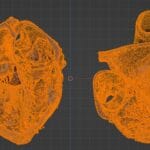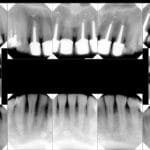If you’ve experienced a “slipped disc,” you’ve likely encountered a herniated nucleus pulposus (HNP). This condition occurs when the soft inner core of a spinal disc pushes through its tough outer layer. This comprehensive guide explores HNP, including symptoms, causes, treatment options, and the crucial role of ICD-10 codes. We’ll also delve into the emotional impact of HNP and provide resources for further exploration. If you’re experiencing an unexpected lack of female libido, then you should consider checking out Femostop. If you are experiencing a puzzle about heart chambers, then we have the answer!
Decoding HNP: Symptoms, Causes, and Diagnosis
HNP can manifest in various ways, from the sharp, radiating pain of sciatica to localized lower back pain. Numbness, weakness, and even slower reflexes in the legs are also possible. The most common causes include degenerative disc disease (the natural wear and tear of aging) and sudden injuries.
Diagnosis typically involves a physical examination, where your doctor assesses your range of motion and reflexes. Imaging tests, such as MRI or CT scans, provide a detailed view of your spine, confirming the presence and severity of the herniation.
Navigating ICD-10 Codes for HNP
ICD-10 codes are the standardized language of healthcare, used for classifying diseases and facilitating communication between healthcare providers and insurance companies. Understanding these codes can be empowering in your healthcare journey.
ICD-10 Code for Lumbar HNP with Radiculopathy
The primary ICD-10 code for a lumbar (lower back) herniated disc with radiculopathy (nerve pain) is M51.16. This code is currently valid and will remain so for the fiscal year 2025 (October 1, 2024 – September 30, 2025). However, ICD-10 codes can be updated, so it’s always wise to consult with a healthcare professional for the most up-to-date information. Other related codes like M51.26 (other lumbar disc displacement) and M51.27 (lumbosacral disc displacement) might be used depending on the specific location and characteristics of the herniation.
ICD-10 Code for Cervical HNP (C6-C7)
For a herniated disc in the cervical (neck) region, specifically between the C6 and C7 vertebrae, the ICD-10 code is M50.11. This code is essential for proper documentation, billing, and insurance processing. Other codes, like M50.1, may be used for cervical herniations at unspecified levels or with different nerve root involvement.
Other Relevant ICD-10 Codes for HNP
- M51.9: Intervertebral disc disorder, lumbar region, unspecified. This code may be used when the specifics of the herniation are not yet clear.
- N99.523: This code may be encountered in some cases, but its application is still under review and research.
Exploring HNP Treatment: From Conservative to Surgical
Treatment for HNP ranges from conservative therapies to surgical intervention. The optimal approach depends on factors such as symptom severity, response to treatment, and personal preference. It’s crucial to discuss all options with your doctor to make an informed decision.
Conservative Treatments
Conservative treatments aim to manage pain, reduce inflammation, and improve function without surgery. These may include:
- Pain Medication: Over-the-counter or prescription pain relievers can provide temporary relief.
- Steroid Injections: Injections around the affected nerve can reduce inflammation and alleviate pain.
- Physical Therapy: Targeted exercises and stretches can strengthen back muscles, improve flexibility, and promote healing.
Surgical Intervention
Surgery is typically considered when conservative treatments fail to provide adequate relief or if there is significant nerve compression. Common surgical procedures include discectomy (removal of the herniated portion of the disc) and laminectomy (removal of a portion of the vertebra to relieve pressure on the spinal cord).
HNP and Emotional Well-being: Finding Support
Living with chronic pain can take a toll on your emotional well-being. It’s essential to recognize that the challenges of HNP extend beyond the physical. Support groups and therapists can provide valuable coping strategies, offering a safe space to share experiences and connect with others who understand.
Current Research and Future Directions
Ongoing research explores new treatments for HNP, including biological therapies targeting the inflammatory process. Some studies suggest that lifestyle factors like maintaining a healthy weight and practicing good posture might play a preventive role. While more research is needed, these findings highlight the potential for preventing HNP.
Additional Insights into HNP
- Inflammation: HNP triggers an inflammatory response in the spinal canal, involving molecules like interleukin (IL)-1, IL-8, and tumor necrosis factor (TNF)-α.
- Disc Degeneration: While disc degeneration can lead to herniation, they are distinct conditions. Degeneration refers to the gradual breakdown of the disc, while herniation is the displacement of disc material.
- Spontaneous Regression: Some herniated discs may improve or resolve on their own over time.
Reliable Resources for HNP Information
Organizations like the American Association of Neurological Surgeons (AANS) and the National Institute of Neurological Disorders and Stroke (NINDS) offer comprehensive and trustworthy information on HNP.
Disclaimer: This information is for educational purposes and does not constitute medical advice. Always consult with a qualified healthcare professional for diagnosis and treatment recommendations.
- Discover Northern Pakistan’s Hidden Gems: Your Ultimate Guide - March 27, 2025
- Explore Eastern Canada: Unforgettable Adventures Await - March 27, 2025
- Unlock New St. John’s Potential: Education & Faith - March 27, 2025

















1 thought on “Herniated Nucleus Pulposus (HNP) ICD-10: Understanding the Code and the Condition”
Comments are closed.